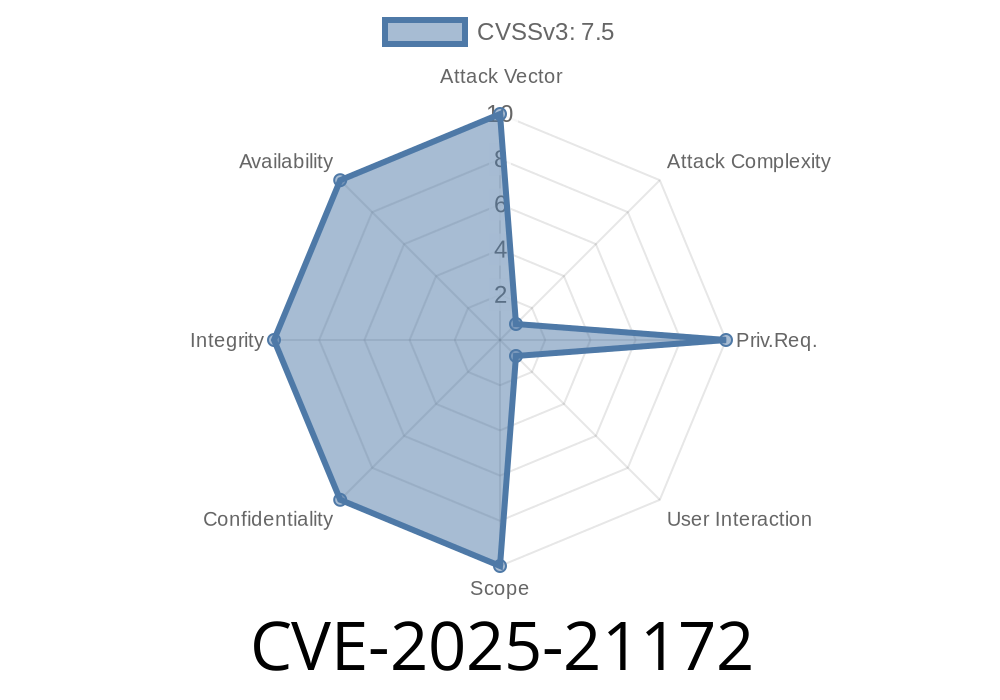CVE-2025-21172 refers to a critical remote code execution vulnerability that affects the Microsoft .NET framework and Visual Studio integrated development environment (IDE). This post aims to unravel the details of this vulnerability, provide an overview of the exploit, and offer helpful resources for mitigating it.
Vulnerability Details
The Microsoft .NET framework is a widely used software development framework for building applications on the Windows platform. Visual Studio is a popular IDE that supports the .NET framework, along with many other languages and platforms.
In CVE-2025-21172, a vulnerability exists in the way .NET processes web requests using the System.Text.RegularExpressions library. By sending a specially crafted regular expression pattern, an attacker can trigger a buffer overflow, which may result in remote code execution. This means that the attacker could execute arbitrary code on the targeted system, potentially gaining full control of it.
Exploit Overview
To exploit this vulnerability, an attacker would first craft a malicious regular expression pattern. For example:
string maliciousPattern = "(?<=\\G.{2,}?)(?<x>[\\s\\S]{1,2}(?=.*\\1)(?!\\1))";
The attacker could then inject this pattern into a vulnerable .NET application, usually through a web form or query parameter. When the application processes the pattern using the Regex.IsMatch() method, the buffer overflow occurs, potentially allowing the attacker to execute arbitrary code.
For instance, a vulnerable application could have code like
using System;
using System.Text.RegularExpressions;
...
public bool CheckInput(string input, string pattern)
{
try
{
bool isValid = Regex.IsMatch(input, pattern);
return isValid;
}
catch (Exception ex)
{
Console.WriteLine("Error: " + ex.Message);
return false;
}
}
Affected Versions
Microsoft .NET framework versions 4.6 through 4.8 and Visual Studio versions 2017 through 2022 are affected by this vulnerability.
Mitigation Steps
Individuals and organizations leveraging the Microsoft .NET framework and Visual Studio should immediately follow the necessary steps to mitigate the risk posed by this vulnerability:
1. Microsoft has released security updates to address this vulnerability. Download and install these updates for the affected software.
* .NET Framework: Security Update Guide
* Visual Studio: Security Update Release Notes
2. Implement secure coding practices to minimize the risk of vulnerabilities in your .NET applications. In particular, avoid using regular expressions from untrusted sources. Always validate user-input and sanitize it before processing.
3. Regularly review and update your software dependencies to ensure that you use the latest and most secure versions.
Conclusion
CVE-2025-21172 is a critical remote code execution vulnerability affecting the Microsoft .NET framework and Visual Studio IDE. Prompt action is required to mitigate the risks associated with this vulnerability. Apply the available security updates, adhere to secure coding practices, and maintain a keen eye on software updates to protect your applications and systems.
Timeline
Published on: 01/14/2025 18:15:30 UTC
Last modified on: 01/31/2025 01:44:22 UTC
